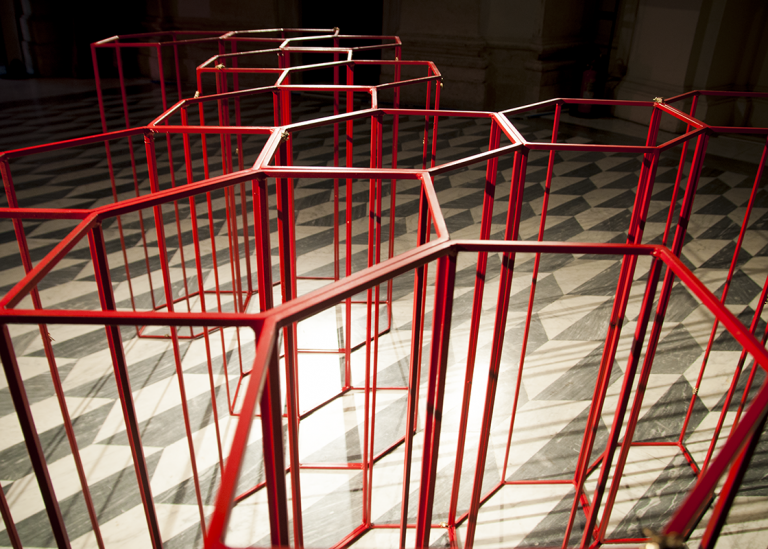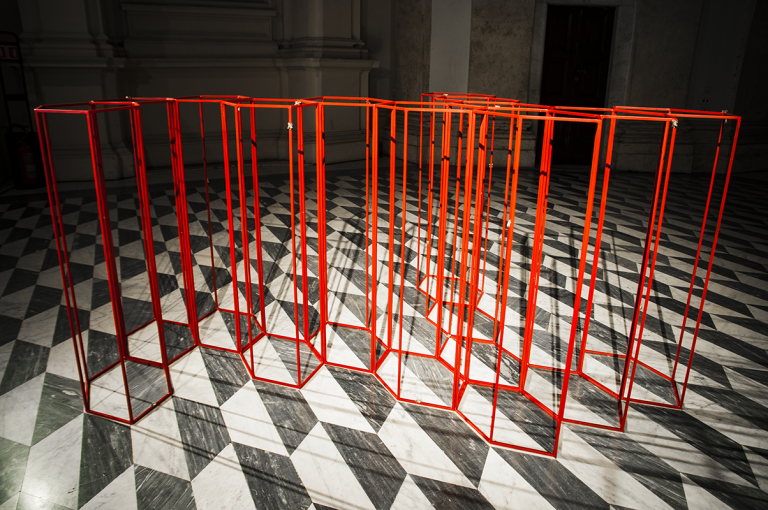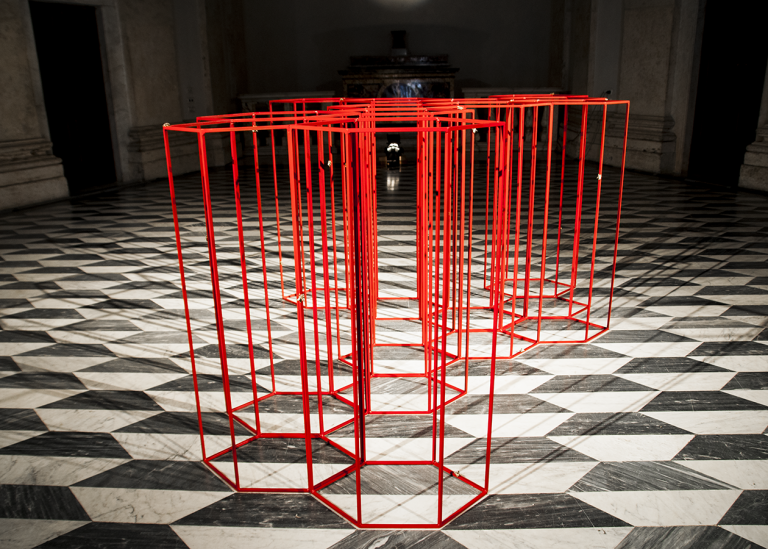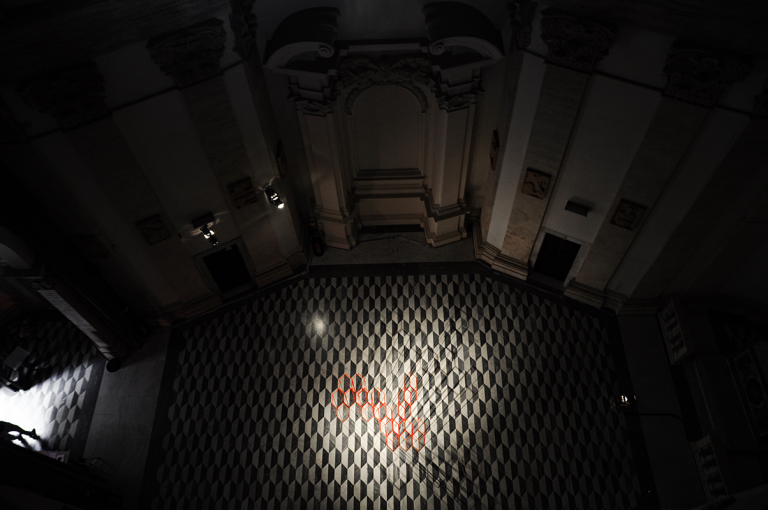Daniela Cotimbo
Art Curator
- Home
- About
- Re:Humanism
- Exhibitions
- OVERTON WINDOW: Solo
- Muovendomi, stando ferma.
- Second Order Reality
- The Stone Monkey
- Tecnoriti
- Sparks and Frictions Re:humanism #3
- Beyond Binaries
- Distrust Everything
- IperSitu
- Non sono io il fotografo
- Object Oriented Choreography
- Don’t you forget about me
- Re:define the boundaries Re:humanism #2
- Within a latent space
- Allegra ma non troppo
- Complessità
- Re:humanism art prize #1
- Ionian Archaeological Archives
- Die andere Seite
- Models of display
- Se non vedete segni o prodigi non credete affatto
- CsO
- ANDIAMO Là
- Talk
- Publications
- News
- Contact
Se non vedete segni o prodigi non credete affatto

Se non vedete segni o prodigi non credete affatto
10-21.05.2016
Anahi Angela Mariotti
Curated by Daniela Cotimbo
Sala Santa Rita, Rome
There are many ways to define a miracle. According to Wikipedia, the universal source of contemporary knowledge, the definition of a miracle is associated with the field of theology as an “extraordinary event, beyond the laws of nature, considered to be performed by God directly or through a creature.” The same encyclopedia then refers to its common sense as a phenomenon “that causes wonder.”
Many have pondered the essence of this word, attributing different specificities to it at different times. What is certain is that the miracle remains a “problem” even in contemporary times. In its theological manifestation, the miracle takes on the function of a symbol and a vehicle for a message whose content is inherent in the symbol itself. However, symbolism can only belong to a system of collective beliefs and mythologies, shaped over the ages precisely because of the need to respond to an ever-present need for transcendence.
From a philosophical perspective, it has often been noted that the need for miracles arises from a clear demarcation between the concepts of divinity and nature, from the impossibility of accepting nature outside one’s own cognition.
“Those who surrender to nature do not need the unknowable, the supernatural, to feel respect; there is only one miracle for him, and that is that everything on this earth, including the greatest flowering of life, simply formed without miracles in the conventional sense of the word.” (Konrad Lorenz)
It is now clear that this game is played entirely in the field of collective belief and in the relationship that humans have with what appears mysterious and inexplicable to them. Even the philosopher Ludwig Wittgenstein, so focused on making language the essence of any experience and distant from any theological position, felt the need to appeal to the “mystical” and the “unspeakable” to define something that properly escapes the logic of language and yet only through it can manifest itself as such.
In relation to the imposing architecture of the Sala Santa Rita, rich in symbolism and historical connotations, it is difficult to think of an intervention that does not involve these elements. The floor, with its strong scenic presence, conquers the space once occupied by furniture and furnishings destined for worship.
This symbolism seems to necessarily recall the history of Santa Rita da Cascia, historically associated with the symbol of the bee due to a miraculous episode in which she is the protagonist. The beehive, a shelter for the insect but also a symbol of the complex architectural organization of a working society, lends itself well to manifesting this dichotomy between sacred symbol and the complex social articulation.
Its vertical projection is the result of stratification, which is normally attributable to the succession of epochs and enriched by collective mythologies in function of the ever-present need to escape meaninglessness. Anahi Angela Mariotti, with her intervention, highlights the difference between a passive approach to belief and the possibility of a feeling that is primarily the result of a present experience and not the evocation of a vaguely defined “elsewhere.”
The bronze bees, products of the artist’s delicate sculptural sensibility, represent precisely this possibility of anchoring to reality, directly involving her ability to shape the form. The intervention delicately integrates into the pre-existing architecture; its forms are the result of a feminine sensitivity capable of inhabiting space without imposing itself on it. At the same time, the sculptural and installative nature of the work guarantees its presence, amplifying the already present play of optical illusions created by the floor. The installation seems to project itself into the room like a drawing on a sheet of acetate crossed by a beam of light: thus, the work exists but could disappear when the light goes out and the eyes no longer see.








